School Meals Continue to Connect With Virtual Learners
Despite the challenges of COVID, school nutrition professionals continue to strengthen cafeteria-community connections.
Help nourish students’ minds, bodies, and hearts this holiday season!
Despite the challenges of COVID, school nutrition professionals continue to strengthen cafeteria-community connections.
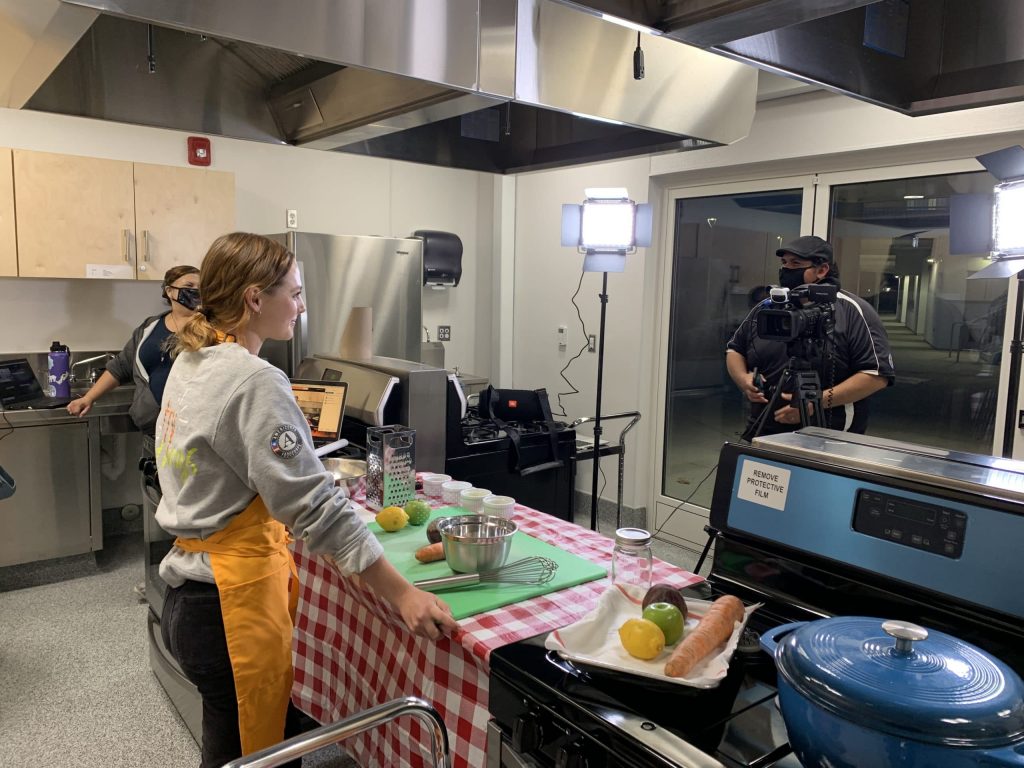
We have reached the one-year anniversary of the COVID-19 pandemic’s takeoff in the United States. This milestone marks two most-unusual school years that have featured extended school closures, shifting learning models, and continual vigilance and concern about outbreaks of the virus in schools. Through it all, there has been at least one constant: school nutrition professionals providing meals to children and their families.
Nearly every school district in the country has offered parents some type of remote learning option, even if schools are open. Many districts have been in an all-virtual mode throughout the entire 2020-2021 school year, and some have taken a hybrid approach. School meal operations have adapted for classroom service, and even curbside meal distribution systems have become almost routine. The real challenge, say school nutrition professionals, is reproducing the signature connections students and families made in school cafeteria settings—without the cafeteria.
From nutrition lessons and new food samplings to school garden activities and take-your-parent-to-lunch-day events, school cafeteria teams regularly deliver nourishment that’s more than a meal. Despite the challenges presented by the pandemic, they continue to discover new and inventive ways to maintain and even strengthen cafeteria-community connections.
Olivia Hardley had less than a full year of experience as a FoodCorps service member at Rio School District in Oxnard, Calif., before the world turned upside down. Initially serving mostly at two school sites, Hardley made her own pivot when schools closed to in-person learning. Today, she’s teaching nutrition lessons, hosting taste tests and facilitating farm-to-school projects—but now she’s reaching her audience via meal kits, YouTube and Zoom.
Hardley’s supervisor, partner, and chief cheerleader is Lacey Piper, MS, RD, Rio Child Nutrition Director, who had her own pivots to manage: she returned from parental leave in the middle of the pandemic to a school without students onsite, and a service model that provided a week’s worth of meals to anyone under 18. With meal bundles provided once a week, Piper facilitated a shift from individually wrapped portions to bulk items, especially for fresh produce from local farms. This allowed the school nutrition team to continue showcasing a Harvest of the Month program developed in collaboration with other school nutrition directors and nutrition educators in the area.
“Pre-COVID, we’d feature a designated fruit or vegetable every Thursday on our salad bars,” says Piper. “Every third Thursday, we’d offer a specialty salad featuring that product and provide the recipe on our website for parents.”
At the very beginning of the new school year, Hardley hit the ground running with a Tomato Crunch Salad meal kit featuring tomatoes, the September Harvest of the Month item. The kit was included in meal bundles provided to families. It featured key ingredients along with a recipe card and a link to a YouTube video of Hardley demonstrating recipe preparation. In October, the Harvest of the Month recipe kit featured a bagel, a packet of marinara sauce, cheese, and bell peppers for a Bell Pepper Bagel Pizza. In November, persimmons were center stage, bundled with Granny Smith apples, lime, and mint for a refreshing Perfect Persimmon Salad.
Hardley and Piper admit to some early discouragement with the lack of feedback and response from their remote audience. They could track viewers of the recipe demos on YouTube, but an initial survey that was sent home about the Tomato Crunch Salad kit didn’t earn a single response. But patience and persistence pay off—and so does leveling up.
With a number of repeat participants, Hardley is pleased to see “some kids who literally have no kitchen experience whatsoever” gain more comfort with their nascent skills.
Before the pandemic, an onsite family cooking night program had been in the early stages of development. By fall, Hardley and Piper decided they could go forward, tweaking the plan by relying on Zoom. Fortunate to have access to a teaching kitchen at one school, along with the expertise of a district videographer who provides the camera equipment and lighting, Virtual Cook Nights were a go, with the first event, a Root Fruit Slaw, scheduled in December.
For the inaugural class, Hardley and Piper requested advance sign-up and had 80 responses. Twenty-eight participants showed up on screen and stayed until the end. “We learned a lot in that first class,” says Hardley, citing WiFi dead spots in certain parts of the kitchen and her struggle to balance looking at the camera with watching her students on the monitor. She and Piper laugh, reminiscing about one awkward moment when Piper tried to silently signal to Hardley the need to address one student who was showing unsafe knife skills, but Piper’s protective mask impeded any lip reading.
With experience (and improved WiFi), the second event in January, featuring a Kale Caesar Salad, was smoother and even more successful. Hardley encourages student and parent participation, pausing to encourage questions and comments live and through the chat function. She highlights students with model dishes as additional “panelists” on Zoom. With a number of repeat participants, Hardley is pleased to see “some kids who literally have no kitchen experience whatsoever” gain more comfort with their nascent skills.
The Rio School District pair hope to continue to offer monthly Cook Night events after the pandemic comes to an end, but they acknowledge that it will take new funding. Approved to feed the community through June 30, Piper can send home the bulk ingredients for the Harvest of the Month program for free. But that likely will change when districts return to conventional cafeteria meal service.
For now, the team is buoyed by the positive responses to their creative outreach, summed up in this welcome interruption to January’s class, when one young chef said, “Miss Olivia, can I tell you something? I never eat salad, but I’m going to eat this one!”
[callout] View all of Hardley’s nutrition videos on YouTube. [/callout]
Many parents managing the unique challenges of homeschooling their children during pandemic lockdowns are extraordinarily grateful for the school meals and meal kits sent home. These meals provide their children with another familiar touchstone with the school community, can ease the strain on family budgets, and also help to relieve some of the meal planning and preparation pressures on parents and caregivers. Recognizing that this is a gift that they can provide to frazzled families, the Food and Nutrition Services team in Georgia’s Cobb County School District developed a Family Dinner takeout program.
Emergency meals provided to students last spring and summer led to requests for additional meal offerings, first for envious younger siblings and then for working-from-home parents, recounts Emily Hanlin, MBA, RDN, LD, Executive Director. The natural next step was to offer a Family Dinner Meal Kit, marketed as “a delicious option to take the stress of planning off your ‘plate.’”

For $19.98, the now-weekly Family Dinner feeds a family of four and can be picked up curbside along with student meals on Wednesdays. Families can pre-order from a menu of three options that rotate. One recent lineup was Alfredo Pasta with Chicken and Broccoli (served with garlic toast and Caesar salad), BBQ Pork Dinner (served with Texas toast, corn, roasted vegetables and a side salad) and Vegetarian Lasagna (with garlic toast and a family salad). Also cycled into the menu are Chicken Parmesan, a Spanish Spiced Chicken and a General Tso’s Chicken. In the beginning, Hanlin and her team leveraged their social media channels to engage family interest in menu offerings, using polls to determine the choices. Today, the team monitors sales, but has yet to experience any significant drop-off. In fact, they are actually preparing to offer a fourth weekly option.
“We thought it would fall off over time,” explains Hanlin. “At the beginning, there was a lot of active community support for the school nutrition team.” The new offering brings in modest but much-needed revenue to help the self-sustaining school meal operation that has been strained since last March. “But as its popularity continues, we realize that we’re actually filling a need in the community.”
Thinking ahead to the fall, Hanlin hopes to continue the Family Dinner program, with a few tweaks to the model to allow evening pickup even after all students are back in schools. In the meantime, Hanlin and her team make every effort to ensure that any event or promotion that is offered to students in school is also offered to their virtual learners, such as special treats for Valentine’s Day and St. Patrick’s Day. They want to keep children engaged in the school meal program wherever they are learning. “These children are still our customers,” she says.
[callout]Learn more about the Cobb County Food and Nutrition Services Family Dinner program online.[/callout]
During this unprecedented year, the federal government made it easier for school foodservice departments to provide meals to students learning away from school. In many districts, operators are taking advantage of these flexibilities to send bulk ingredients home in place of or in addition to individual servings of school meal components. While this has been a terrific opportunity to provide fresh foods, especially produce, to families in the community, large families with multiple children are literally running out of pantry and refrigerator space, especially if meals are distributed only once a week.
Every school day, Jessica Pachler sends her four boys—two in middle school and two in elementary school—on a two-mile round-trip walk to their neighborhood school in Anne Arundel County, Md., to pick up school breakfast, lunch, supper, and a snack, along with fresh produce. “It’s a natural break in the day and a great way for them to get some exercise,” she explains. But the boys don’t always love the day’s menu components and sometimes the sheer volume is overwhelming. Pachler and her husband hate to waste food. Applying their shared experience in the restaurant business, the Pachlers have spent the better part of the year tapping their culinary creativity to repurpose their children’s school meals into new family meals.
She remembers the first recipe she made with school meal components: Cream of Celery Soup. “We were getting so much—so much—celery for the four boys. You can only do ants on a log so many times,” Pachler says. She found similar solutions for using up tomatoes and carrots. “But even as someone who cooks a lot, it didn’t always occur to me what to make.” Other area parents were facing the same challenge.
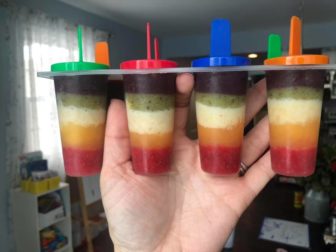
An event planner with expertise in social media marketing, Pachler administers several Facebook groups and decided to create one dedicated to “Cooking With School Food.” Initially launched in December 2020 among a small group of Annapolis-area parents, the group already boasts close to 500 members hailing from all across the country and including parents and school nutrition professionals alike. “People have posted great ideas,” says Pachler, citing a personal favorite among her boys: transforming prepackaged cold sandwiches by adding garlic and butter to the bread and heating them up. Another Pachler family favorite is a broccoli and cheese gratin—using school broccoli, school milk and school cheese sticks. Her boys called it “the best” and have requested more broccoli dishes. She also uses her Instant Pot to make her own yogurt from extra milks and school fruit cups.
The Cooking With School Food Facebook group has been an amazing source of creative ideas—ones that work for wannabe chefs, as well as for those who don’t have the time and wherewithal to do much kitchen experimentation. Squash “boats” are filled with school veggies (broccoli, peppers, carrots, celery) and topped with crushed whole-grain tortilla chips from school. Cheese is added to a corn and bean salad and warmed up in the microwave for a dip for baked corn chips. Prepackaged muffins are repurposed for bread pudding. Fresh kiwis and oranges from school are layered into rainbow popsicles. The group regularly shares photos, instructions, and favorite cookbooks.
Jodi Risse heads the Food and Nutrition Services department for Anne Arundel County Public Schools, and she is proud and delighted to see area families sharing recipes for the foods they receive from her team. “It allows us to engage with the families and children in our county in a positive way. The addition of whole vegetables and fruits really opened a dialogue between our staff and families—as well as between parents and children, especially if they are cooking together and exploring new foods and recipes,” she says. “Our family connections through this pandemic have blossomed. I am sure that when we are back to fully in-person learning, our many new students at curbside will be our customers when we’re back to brick-and-mortar.”
[callout]Cooking With School Food is a public group on Facebook, and new members are eagerly welcomed. [/callout]
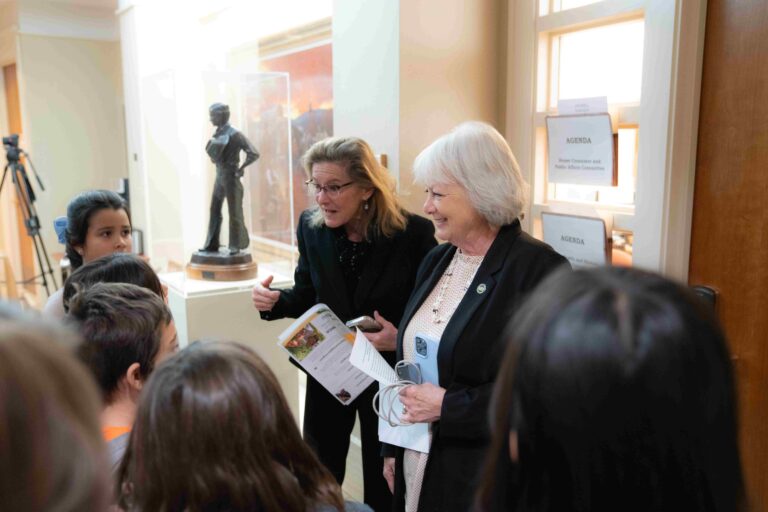
Our 2025 Child Nutrition Policy Year in Review
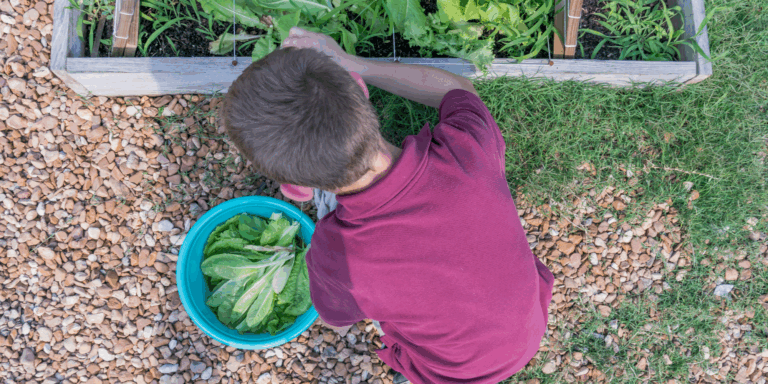
Winterizing Your School Garden
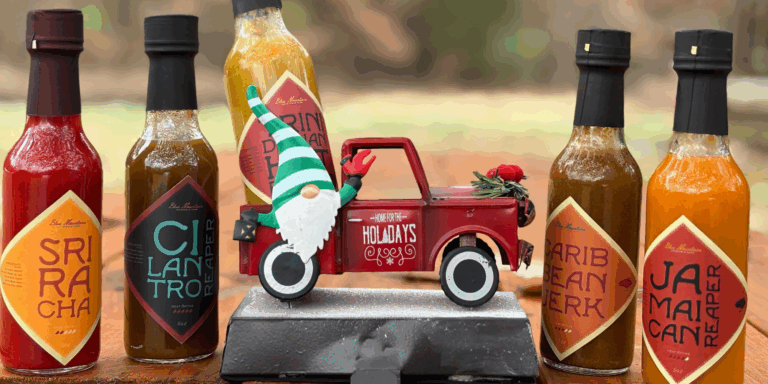
5 Awesome Small Businesses by FoodCorps Alums